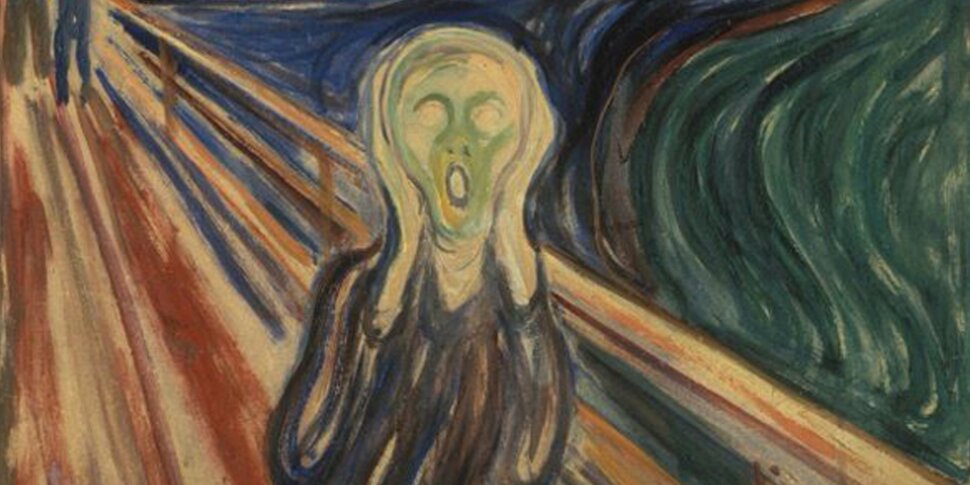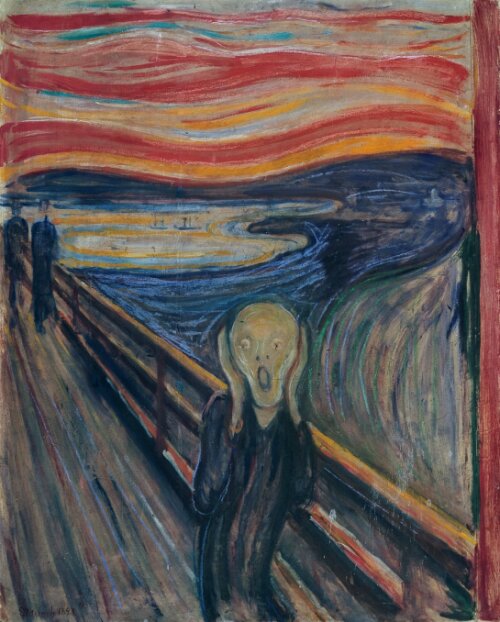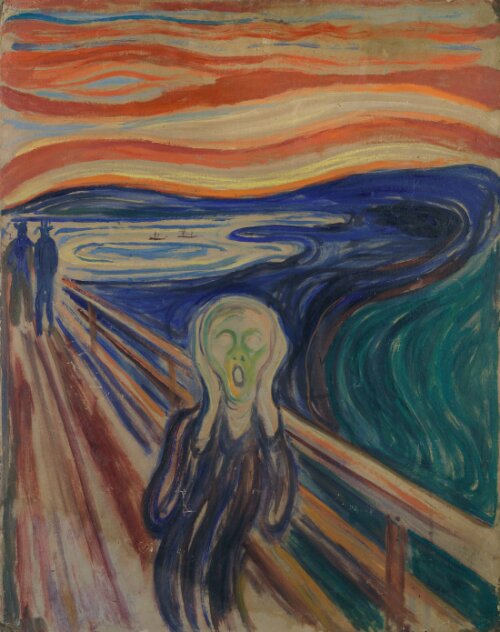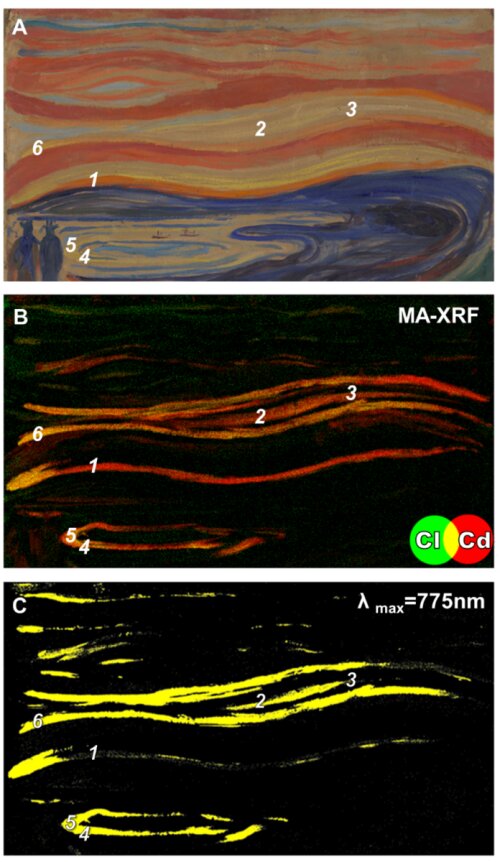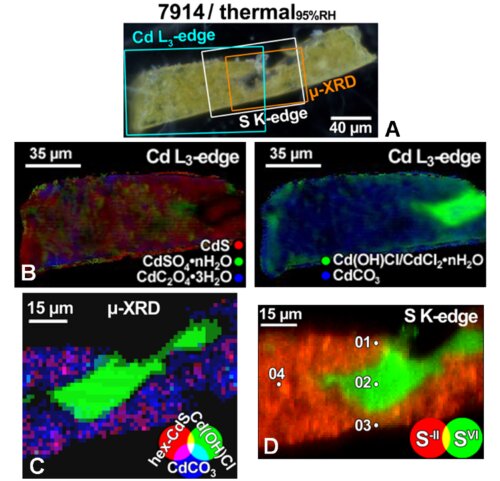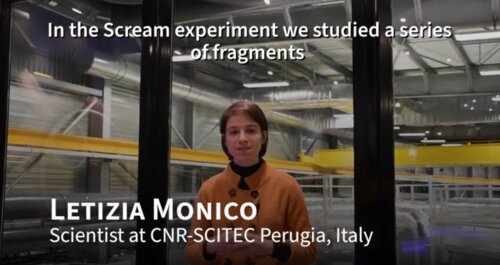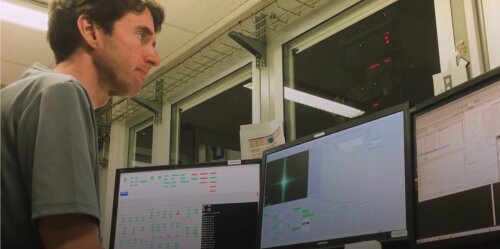The chemistry of The Scream (1910?)
The Scream by Norwegian painter Edvard Munch is among the most famous paintings of the modern era. The now familiar image is interpreted as the ultimate representation of anxiety and mental anguish. In fact, there are a number of versions of The Scream: two paintings, two pastels, several lithographic prints and a few drawings and sketches.
The two most well-known versions are the paintings that Edvard Munch created in 1893 (left of above images) and 1910(?) (right). Each version of The Scream is unique. Munch clearly experimented to find the exact colours to represent his personal experience, mixing diverse binding media (tempera, oil and pastel) with brilliant and bold synthetic pigments to make ‘screaming colours’. Unfortunately, the extensive use of these new coloured materials poses a challenge for the long-term preservation of Munch’s artworks.
Below a photograph of the 1910(?) version of The Scream that belongs to the collection of the Munch Museet (Oslo, Norway) is shown. In 2004 is was stolen from the museum and only recovered two years later. During that period, the painting suffered from water damage, as is clearly visible in the lower left corner.
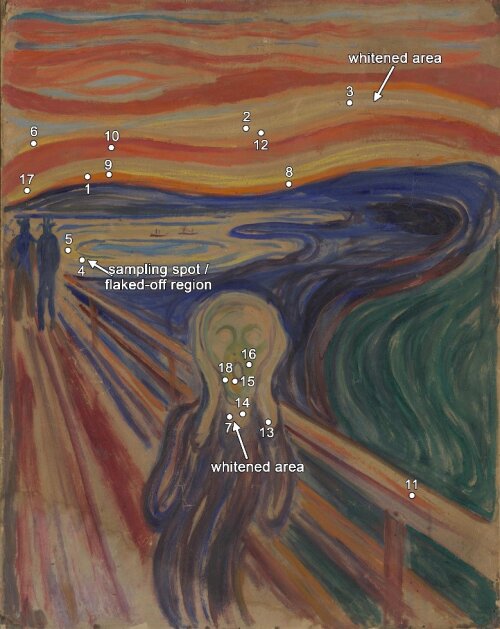
Photograph of The Scream (1910?) (Munch Museum, Oslo; catalogue n. Woll.M.896). Photo Credit: Irina Crina Anca Sandu and Eva Storevik Tveit, Munch Museum. Numerical labels refer to location where UV-Vis-NIR reflectance and fluorescence spectroscopy single point measurements were performed.
Next to the damage in the lower left corner, the 1910(?) version of The Scream clearly also exhibits signs of degradation in different areas where cadmium sulfide (CdS) based pigments have been used:
- cadmium yellow brushstrokes have turned to an off-white colour in the sunset cloudy sky and in the neck area of the central figure.
- in the lake above the person, a thickly applied opaque cadmium yellow paint is flaking.
Throughout its existence, several factors are likely to have influenced the deterioration of the masterpiece, i.e.,
- the nature of yellow pigments themselves and
- the environmental conditions in which it was kept (both in the museum and during the two year period it was stolen).
Main results
The red, orange and yellow paint streaks of The Scream were realized by means of a combination of vermilion red (mercury sulfide, HgS) and cadmium yellow (cadmium sulfide, CdS). However, there are two types of CdS discernable: one rich and one poor in chlorine compounds. The Cl-rich CdS is indicated in false yellow in panel B of the figure below and exhibits a specific molecular luminiscence, as shown in panel C.
Macro distribution of Cl-containing CdS within the upper part of the painting , either visualized by means of MA-XRF (co-presence of Cl and Cd, panel B) or by means of hyperspectral imaging (luminiscence wavelength of 775 nm, panel C).
During the degradation, the bright yellow cadmium sulfide (CdS) is oxidised to form colorless/transparent cadmium sulphate (CdSO4). In view of the fact that CdS is a semi-conductor, this transformation can be caused by light impinging on the yellow paint. But also other environmental factors can trigger it.
Micro distribution of various Cd-species in a paint chip aged at high relative humidity and elevated temperature; this paint was prepared with an original CdS paint powder (#7914). In those areas where Cd(OH)Cl is present (bright green in panel C), after aging, an abundance of CdSO4 (bright green in panel D) is encountered.
The present study demonstrates that, in case chloride-compounds are (originally) present in the yellow paint, this transformation predominatly takes place in high-moisture conditions (relative humidity, or RH ≥95%). This spontaneous chemical change takes place, even when there is no light.
In the fledgling paint production industry of the early 20th century, cadmium sulphide was produced from a reaction between e.g. cadmium chloride and sodium sulfide. Thus, it is plausible that chloride-containing compounds such as cadmium chloride (CdCl2) and cadmium hydroxychloride (Cd(OH)Cl) may have been left behind in the cadmium yellow paint as a result of an incomplete (or not very carefully executed) CdS-synthesis reactions.
Research methods and strategy
Non-invasive spectroscopy and imaging
A series of non-invasive in-situ spectroscopic and analyses with portable and imaging equipment of the European MOLAB platform was performed. This included macroscopic X-ray fluoresence analysis, Raman spectroscopy and Fourier-transform Infrared (FTIR) spectroscopy. The main purpose of these activities at the macro-level was to determine the nature of the pigments employed by Munch when painting The Scream and the distribution throughout the artwork.
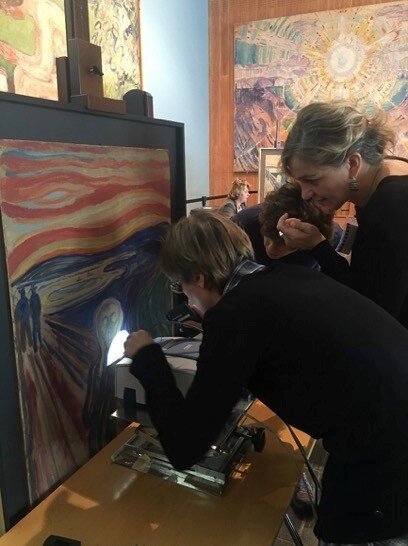
Dr. Francesca Rosi, Dr. Costanza Miliani and Dr. Laura Cartechini (CNR, Italy) in front of The Scream (1910?) while performing portable FTIR measurements.Photo Credit: MOLAB - Italy (CNR, Italy).
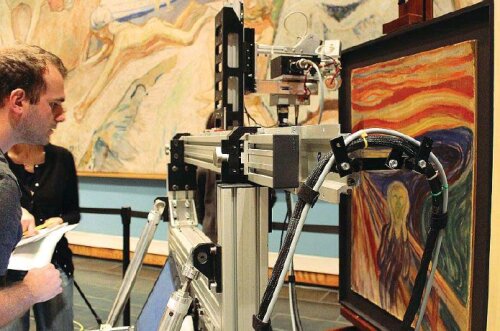
Macroscopic XRF measurements of The Scream (1910?).
Original paint fragments vs artificially aged mockup paints
To contrast the paint material originating from a flaked-off location of the painting, paint mockups were prepared using historical cadmium yellow pigment powder and artificially aged under different environmental conditions. In addition, paint sampled from an original paint tube employed by Edvard Munch was also involved in the investigation.
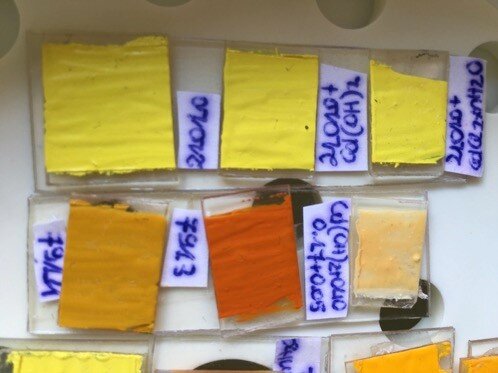
Synchrotron investigations
Various paint samples were examined with micro X-ray diffraction, X-ray micro fluorescence and micro X-ray absorption near edge structure spectroscopy at the ESRF, the European Synchrotron (Grenoble, France) and at the PETRA-III facility (Hamburg, Germany), two of world’s most powerful synchrotrons. The main aim was to study to which chemical changes had taken place in the cadmium-yellow pigment during the degradation.
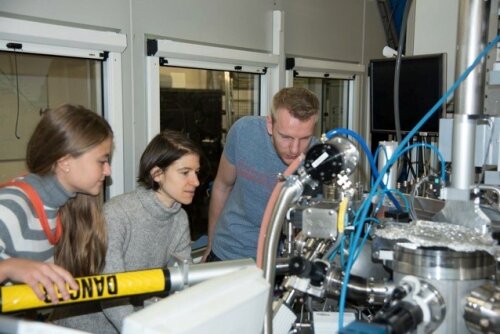
Dr. Annalisa Chieli (University of Perugia, Italy), Dr. Letizia Monico (CNR, Italy) and Dr. Gert Nuyts (University of Antwerp, Belgium) during measurements of cadmium yellow micro-flakes of The Scream (1910?) at beamline ID21 of the European Synchrotron (ESRF, Grenoble, France). Credit: ESRF, Grenoble, France.
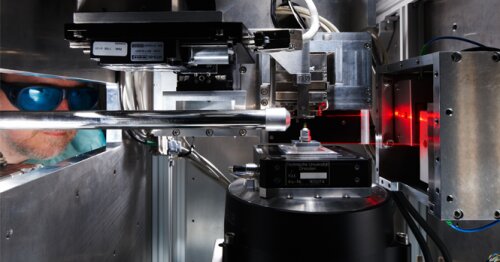
Dr. Gerald Falkenberg (DESY, Hamburg) checking the X-ray microprobe setup at Beamline P06 of the PETRA-III synchrotron facility.
Research Aims
The main purpose of the investigation was to identify the main cause of deterioriation of the cadmium yellow paint in The Scream (1910?).
This information will help to design of an optimal future conservation/preservation strategy for this painting and similar works of art.
Cadmium-sulfide-based yellows are not only present in Munch’s artwork but also in the work of other artists contemporary to him, such as Henri Matisse, Vincent van Gogh and James Ensor.
Science Advances publication
Letizia Monico,* Laura Cartechini, Francesca Rosi, Annalisa Chieli, Chiara Grazia, Steven De Meyer, Gert Nuyts, Frederik Vanmeert, Koen Janssens, Marine Cotte, Wout de Nolf, Gerald Falkenberg, Irina Crina Anca Sandu, Eva Storevik Tveit, Jennifer Mass, Renato Pereira de Freitas, Aldo Romani, Costanza Miliani. Probing the chemistry of CdS paints in The Scream by in situ non-invasive spectroscopies and synchrotron radiation X-ray techniques, Science Advances (2020), 20 (6), 3514.

Impact
The insights gained in this study will be used in the near future in the Munch Museet to select optimal preservation conditions for the painting:
“The right formula to preserve and display the main version of The Scream on a permanent basis should include the mitigation of the degradation of the cadmium yellow pigment by minimising the exposure of the painting to excessively high moisture levels (trying to reach 45% RH or lower), while keeping the lighting at standard values foreseen for lightfast painting materials. The results of this study provide new knowledge, which may lead to practical adjustments to the Museum’s conservation strategy”, explains Irina C. A. Sandu, conservation scientist at the Munch Museet.
“Today the Munch Museet stores and exhibits Edvard Munch’s artworks at a relative humidity of about 50% and at a temperature of around 20o C. These environmental conditions will also apply to the new Munch Museum to be opened in Spring 2020. That said, the Museum will now look into how this study may affect the current regime. Part of such a review will be to consider how other materials in the collection will respond to possible adjustments”, adds Eva Storevik Tveit, paintings conservator at the Munch Museet.
Dr. Letizia Monico (CRN-SciTec Perugia)
Dr. Wout De Nolf (ESRF)
Investigating the degradation of The Scream
Watch the video made by ESRF

Multinational Research Team

An international collaboration, consisting of scientists and art conservators from the following institutes has studied in detail the nature of the various cadmium-sulfide pigments used by Munch, and how these have degraded over the years.
- CNR-ISTM and the University of Perugia (Italy),
- the University of Antwerp (Belgium),
- the Bard Graduate Center in New York City (USA),
- the European Synchrotron Radiation Facility (ESRF, France),
- the German Electron Synchrotron (DESY, Hamburg)
- the Federal Institute of Rio de Janeiro (Brazil) and
- the Munch Museum (Oslo, Norway)
